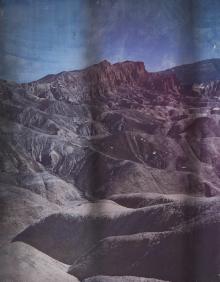Back
Rodrigo Valenzuela: Work in its Place
Rodrigo Valenzuela: Work in its Place
April 25, 2018 to August 05, 2018
This unusual exhibition is a striking example of the museum as medium. It reminds us that the accumulation and juxtaposition of objects can be a dynamic force for understanding and that museums can be laboratories for experimentation. Rodrigo Valenzuela’s new landscape portraits, his selection of works from the Jordan Schnitzer Museum of Art’s collection, and his unconventional manner of displaying these objects, ask us to think about the various possibilities of putting work (labor and art) “in its place.”
The JSMA invited Valenzuela to use its collection as working material. He selected images of bucolic landscapes, quintessential Americana, manual labor, and the overwhelming magnificence of vast expanses in nature, sometimes referred to as the sublime. All of these works come out of a predominantly white, male, Eurocentric tradition in the visual arts. Valenzuela and the curator arranged these works on the inside of a wooden structure, which he calls “an enclosed tower.” Explaining his intent for creating a barrier around art and information, he states, “I want to create a piece that makes direct reference, metaphorically and physically, to the access that we are provided in education and within institutions to be part of hegemonic discourses.”
Museum galleries are typically neutral spaces for objects where visitors can easily obtain knowledge. Here, the scaffolding (made mostly with recycled wood from a previous exhibition) limits access to art and information. On the inside of the structure is a unique world of objects contained in one room, like an inaccessible cabinet of curiosities. For the artist, this space could allude to a museum’s custodial view of history or, perhaps, to the concealed histories of museum objects.
Valenzuela’s new work, made to dialogue with his selections from the JSMA’s collection, hangs on the outside of the structure. He photographed Zabriskie Point in Death Valley, printed his romantic landscape portraits on a laser printer, and applied each photographic image to the surface of a canvas. Valenzuela’s intense hand scrubbing to remove the paper from the canvas distresses the transferred image and offers another reading of “work in its place.”
Michelangelo Antonioni’s 1970 film Zabriskie Point, a continuous flow of contradictions colliding into one another, also inspired Valenzuela’s views of nature that beckon us, but at the same time discourage us from entering. Visitors can catch an occasional glimpse of the art inside the enclosed tower through the gaps between his works. As the installation challenges, interrupts, and obstructs the visitor’s gaze, Rodrigo Valenzuela: Work in its place questions the perceptual, cognitive, and discursive parameters of art and institutional authority.
Rodrigo Valenzuela (b. 1982, Santiago, Chile) is an assistant professor in the art department at UCLA. He completed an art history degree at the University of Chile in 2004 and came to the United States in 2005. For about a decade, he worked in construction while making art. He returned to school and received his MFA in 2012 from the University of Washington. Made possible with the generous support of the Hartz FUNd for Contemporary Art, the exhibition was organized by Cheryl Hartup, Associate Curator of Academic Programs and Latin American Art, with practicum student Erika Milo (BA, Arts and Administration), and additional support from the UO School of Art + Design and Upfor Gallery.
Additional Material








